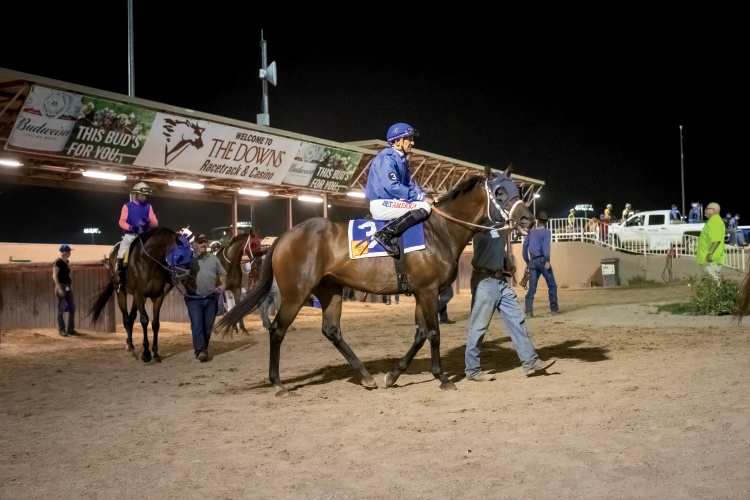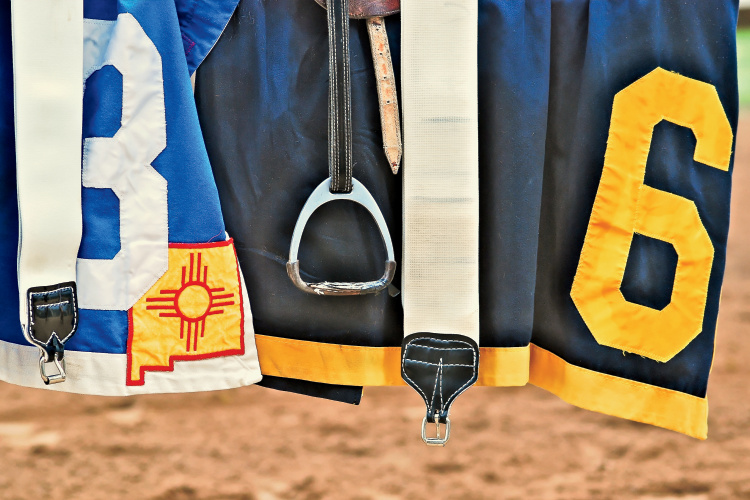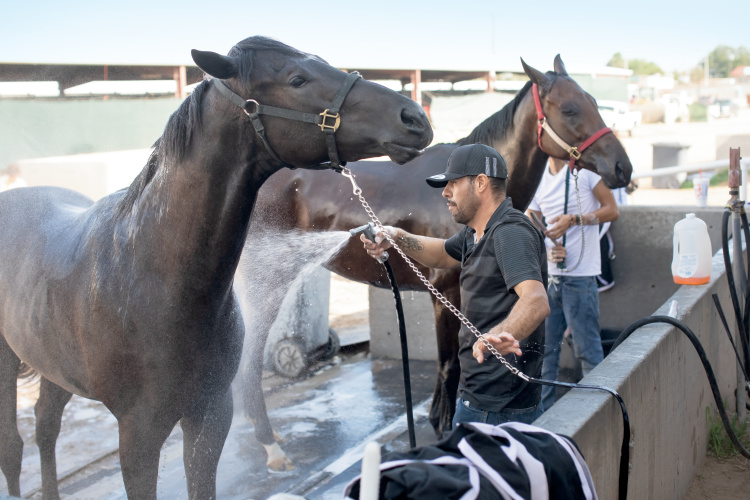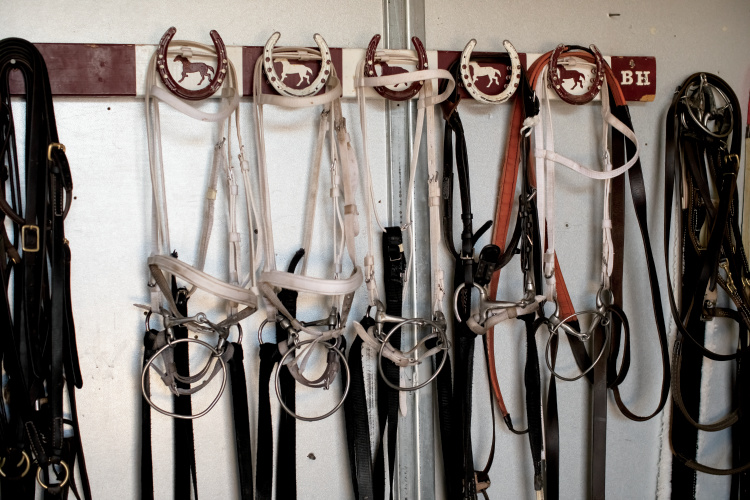Home > New Mexico > New Mexico Agritourism > Triple Crown Winners are Born and Bred From New Mexico’s Horse Racing Industry
Triple Crown Winners are Born and Bred From New Mexico’s Horse Racing Industry
In partnership with: New Mexico Department of Agriculture

For more than 350 years in America, the world’s finest two- and four-footed athletes have delighted crowds with bright racing silks and thundering hooves. But horse racing provides
more than a few smiles and winning tickets to the people of New Mexico. In the Land of Enchantment, racing is a cornerstone of the culture.
“Racehorses epitomize the spirit of our people,” New Mexico Racing Commission’s Executive Director Izzy Trejo says. “We’re a spirited people. We love to compete.”
While informal racing has a long and interesting history across the globe, formal sanctioned racing began in New Mexico as early as the 1930s. Today, more than 80 years later, this thriving industry shows no signs of slowing down.

Breaking Down the Numbers
“Our 2016 Economic Impact Study showed that racing has contributed $549 million to New Mexico’s economy,” Trejo says. “These horses support over 8,000 jobs and produce $63 million in revenue.”
While nailing down the exact number of racehorses who call New Mexico home is virtually impossible, the 2006 Economic Impacts of Racehorse Ownership, Breeding and Training on New Mexico’s Economy Study estimated the total racehorse population, including breeding stock, to be more than 14,600. Given the increase in popularity of thoroughbred and quarter horse racing over the last decade, it’s safe to assume the current numbers are even higher.
As the industry continues to boom, there’s more to celebrate than a rise in attendance numbers at the state’s five racetracks. These animals offer job security in spades.
“These horses provide so many jobs for our people,” Trejo says. “To keep the industry afloat, we need blacksmiths, groomers, racing officials, regulators, trainers, feed store owners, farm workers and breeders. We even need watchmen to look after the broodmares in case they foal in the middle of the night.”

The Road to Triple Crown Victory
One of the arguably more important jobs in the industry rests on the shoulders of the jockey, the one responsible for getting these quick-footed animals across the finish line. And New Mexico has produced one of the finest in the nation.
The illustrious Triple Crown is a series of three races for three-year-old thoroughbreds. In the United States, those races are the Kentucky Derby, which is 1 1⁄4 miles; the Preakness Stakes, which is 1 3⁄16 miles; and the Belmont Stakes, which is 1 1⁄2 miles. The horse that wins all three is dubbed a Triple Crown winner.
It’s a tall order. Until 2018, only 12 horses managed to secure the title since 1919.
This year saw the 13th winner, a stallion named Justify ridden by New Mexico’s very own Mike Smith. Born and raised in New Mexico, Smith says he started riding horses as soon as he could walk.
“My uncle trained horses, my grandparents had horses and my father rode horses,” Smith says. “You could say I was born into the sport.”
Smith started racing professionally in 1982. Jockeys can start as early as 16 years old, and 20 years is considered an impressive stretch. Smith, however, is going on his 37th year riding in the industry.
“I’ve had a long career and I’ve already been so blessed,” Smith says. “And to add the Triple Crown? This journey has been unbelievable.”

For the Love of the Sport
Mirroring the flourishing industry in New Mexico, Smith has no plans to slow down.
“The best part of this job is being able to ride, win and enjoy the feeling of a job well done,” Smith says. “As long as I’m blessed with the opportunities to ride horses, I’m going to keep doing it.”




[…] industry, NM horse racing supports thousands of jobs across the state and is believed to contribute more than half a billion dollars to the state’s economy between the many trainers, breeders, racetrack employees and parimutuel […]